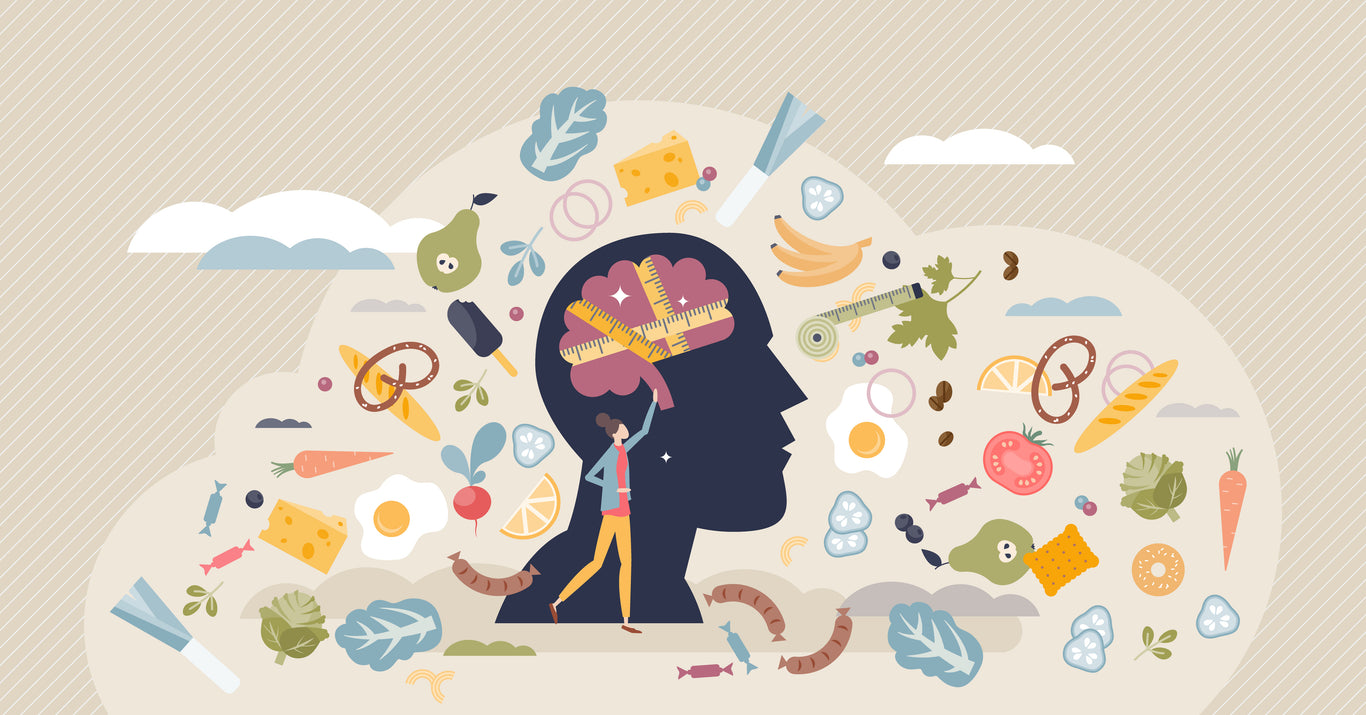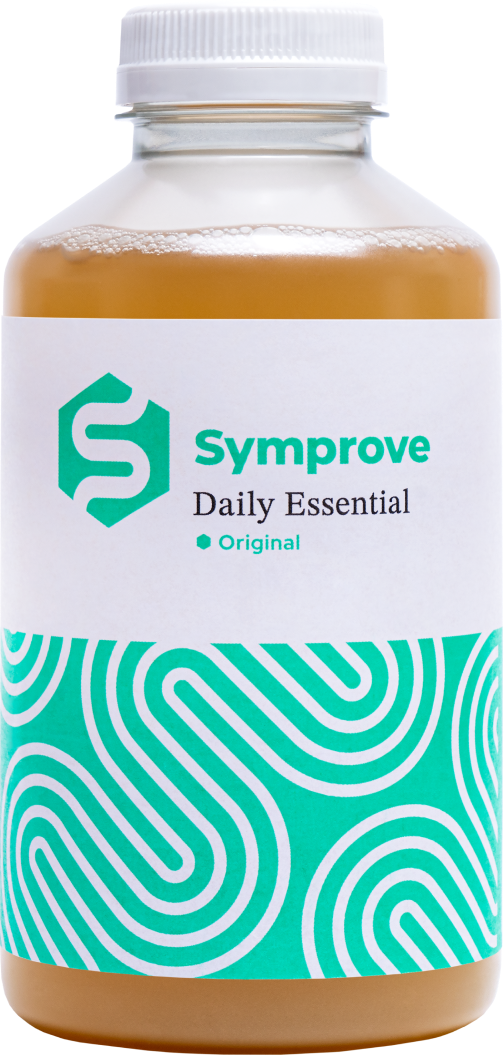Introduction
98% of people who experience eating disorders (EDs) are diagnosed with functional gut disorders (1), such as irritable bowel syndrome (IBS). Whilst there are a number of commonly recognised eating disorders, current research is predominantly focused on 3. This article will therefore specifically discuss the associations between the gut microbiome and Anorexia Nervosa (AN), Bulimia Nervosa (BN) and Binge Eating Disorder (BED) and provide practical advice on how best to approach this patient group as healthcare professionals.
Energy deficits, restrictive dieting, purge behaviours and psychological imbalances are all characteristics of EDs that can have a negative effect on gut microbiome diversity and gut function, whilst microbes themselves may be prerequisites for negative thoughts and behaviours around food. The current evidence into this bi-directional relationship is still emerging but, thus far, can be broken down into the following categories:
Microbiome diversity
Alpha diversity (α-diversity) refers to the diversity of microbes in a single ecological community and is commonly seen to be reduced in ED rodent populations compared to controls (3). Some clinical research postulates that α-diversity is negatively correlated with ED psychopathology, including depression and weight concerns. Interestingly, research shows that individuals with AN demonstrated reduced α-diversity before and after hospital-based weight restoration when compared to healthy controls, however as the AN group gained weight with treatment, the bacterial composition of their gut microbiome became more like that of the control group. Although conclusions cannot be made based on one study, this area warrants further research (4).
Gastrointestinal functioning
Severe food restriction causing energy deficits in EDs leads to delayed gastric emptying and a slower transit time, resulting in earlier satiety and bloating which reinforces restrictive behaviours (5). Purging behaviours that are involved in EDs also affect GI physiology and functioning, potentially resulting in damage to the mucosal lining, motility disturbances, and changes to gastric capacity and gastric emptying (6).
HPA axis
The hypothalamic–pituitary–adrenal (HPA) axis regulates metabolism, emotion, and stress. HPA axis dysregulation is implicated in both AN and BN. AN can result in chronic activation of the HPA axis, resulting in increased cortisol levels. Conversely, BN is associated with reduced plasma cortisol, and consequently reduced satiety, likely exacerbating bingeing behaviour (7).
Hunger hormones
Hunger and satiety hormones including, leptin, ghrelin, peptide YY (PYY) and neuropeptide Y (NPY) are implicated in ED behaviours and may be affected by gut microbes. Under normal physiological conditions, leptin inhibits hunger via a negative feedback mechanism, and ghrelin works in opposition to stimulate hunger (8). Research shows that significant weight loss, characteristic of AN, leads to lower leptin levels and higher ghrelin levels (8).
When studied in rodents, leptin is positively correlated with the quantity of Bifidobacterium spp. and Lactobacillus spp., and negatively correlated with the quantity of Clostridium spp., Bacteroides spp., and Prevotella spp. Conversely, ghrelin levels are negatively correlated with abundances of Lactobacillus spp., and positively correlated with abundances of Bacteroides spp. (9).
The role of the HCP
As a healthcare professional caring for patients who fall into the ‘ED-functional gut disorder’ group, there are a few key considerations to make and it’s important to work together as a multidisciplinary team. The primary focus of recovery should be weight restoration if there is a deficit and increasing diversity of diet through inclusion of all foods. Elimination diets (such a low FODMAP) should be used as a last resort for those who suffer with gut symptoms but have a current or historic ED. Supplements such a probiotics, prebiotics and digestive enzymes may have their place on the recovery pathway, but this should be personalised to the individual case. Non-dietary treatments include gut directed hypnotherapy and conscious breathwork to down regulate the autonomic nervous system, and psychological support through talking therapy.
Conclusion
To conclude, the gut microbiome may be a missing piece in understanding the etiology of eating disorders although more research is still needed. Some recent trials have promising findings, emphasising the significance of gut health (microbial diversity and gut function) in EDs, and may therefore offer some clinical potential for improvements in ED recovery pathways. Healthcare professional treatment must have a holistic approach, with consideration for physical, mental and emotional support on an individual basis.
References:
- Boyd C, Abraham S, Kellow J. Psychological features are important predictors of functional gastrointestinal disorders in patients with eating disorders. Scand J Gastroenterol 2005;40:929–935
- Schultz SK, Kuhl EA, editors. Feeding and eating disorders. In: Diagnostic and statistical manual of mental disorders, Fifth Edition: DSM-5. Fifth. Washington, DC: American Psychiatric Publishing; 2013. p. 329–54.
- Butler MJ, Perrini AA, Eckel LA. The role of the gut microbiome, immunity, and neuroinflammation in the pathophysiology of eating disorders. Nutrients. 2021;13(2):500.
- Kleiman SC, Watson HJ, Bulik-Sullivan EC, Huh EY, Tarantino LM, Bulik CM, et al. The intestinal microbiota in acute anorexia nervosa and during renourishment: relationship to depression, anxiety, and eating disorder psychopathology. Psychosom Med. 2015;77(9):969–81.
- Norris ML, Harrison ME, Isserlin L, Robinson A, Feder S, Sampson M. Gastrointestinal complications associated with anorexia nervosa: a systematic review. Int J Eat Disord. 2016;49(3):216–37.
- Forney KJ, Buchman-Schmitt JM, Keel PK, Frank GKW. The medical complications associated with purging. Int J Eat Disord. 2016;49(3):249–59.
- Sauro CL, Ravaldi C, Cabras PL, Faravelli C, Ricca V. Stress, hypothalamic-pituitary-adrenal axis and eating disorders. Neuropsychobiology. 2008;57(3):95–115.
- Łucka A, Wysokiński A. Association between adiposity and fasting serum levels of appetite-regulating peptides: leptin, neuropeptide Y, desacyl ghrelin, peptide YY(1–36), obestatin, cocaine and amphetamine-regulated transcript, and agouti-related protein in nonobese participants. Chin J Physiol. 2019;62(5).
- Queipo-Ortuño MI, Seoane LM, Murri M, Pardo M, Gomez-Zumaquero JM, Cardona F, et al. Gut microbiota composition in male rat models under different nutritional status and physical activity and its association with serum leptin and ghrelin levels. PLoS ONE. 2013;8(5):e65465.



